Liverpool haven’t been as prolific in recent games as they could have been, and Mo Salah has again seen fingers pointed his way after not passing at key moments. Are the two inextricably linked?
Jurgen Klopp recently noted that the Reds could improve their finishing at key times, given games against Man United, Spurs and now Wolves have been left somewhat in the balance late on.
Jordan Henderson, after full-time at Wolves, said much the same, after Liverpool spurned several chances to increase or re-take the lead.
And much of the supporter-led annoyance over missed chances seems to fall at the feet of Salah. So is it justified?
Before delving into the numbers, some caveats are worthwhile: any annoyance is naturally a stunted amount—the team is not struggling for goals or form, it’s just an inevitability that people will seek for perfection, or at least areas which can be improved.
Also, we’ll just look at Premier League data for now, given that’s the majority of football most of the team have played over the last two months and the fact that the nature of European football changes quite drastically game to game.
Form and numbers
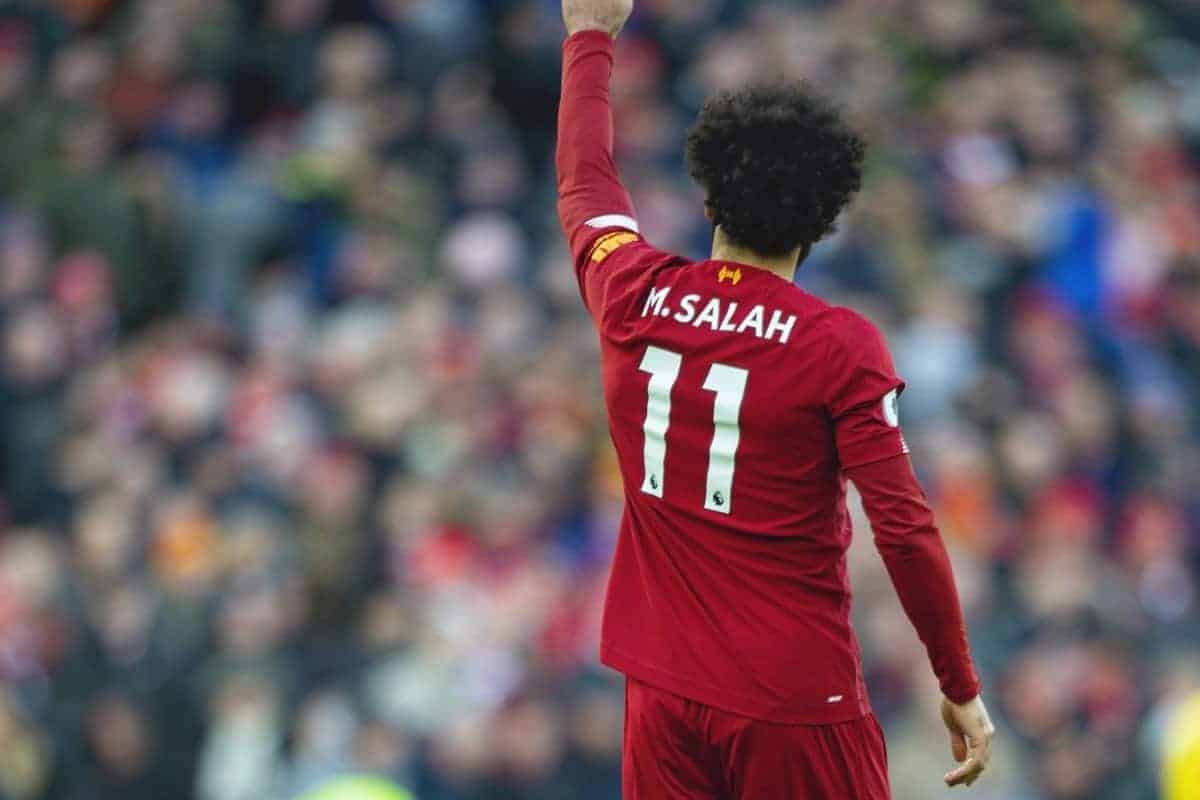
Since playing Watford in mid-December, when Salah scored both goals in a 2-0 win, the Reds have played a further six league games.
We’ve won all six (naturally), scoring 12 goals along the way, but it perhaps should have been several more than that, and contributing to that notion is that Salah himself has ‘only’ two goals in those six games, from a total of 22 shots.
A nine percent conversion rate across those fixtures is fairly abysmal, but is also way below Salah’s strike-rate for the whole season—see the tables below for how he compares to the rest of Europe’s 10 most regular shot-monsters.
The tables are ordered first by shot total, then by goals and finally by conversion rate.


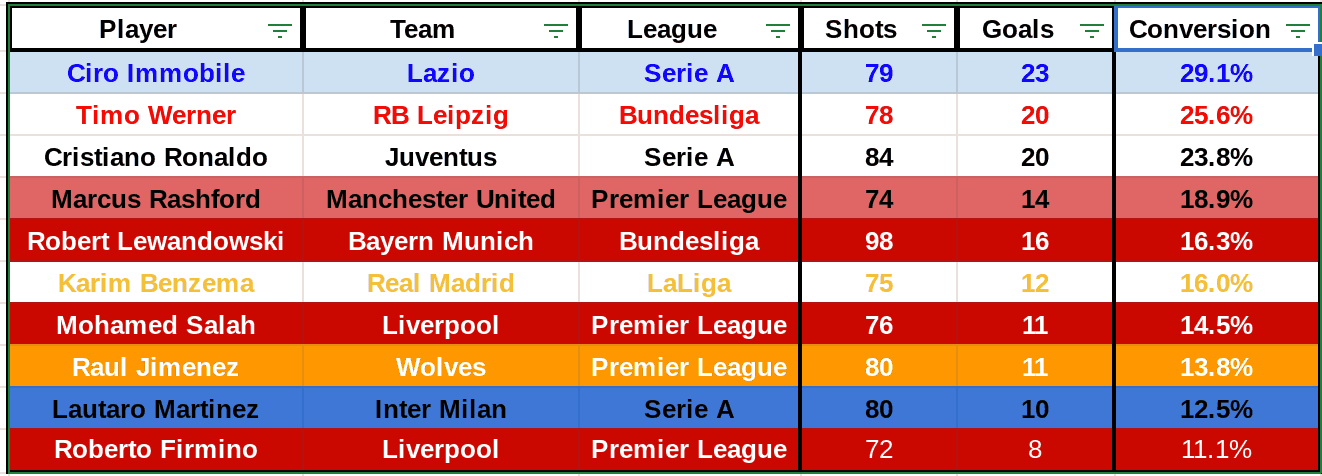
That last-six data suggests a recent dip in clinical fortunes, so is it down to poor finishing or poor choices?
Thanks to Infogol, we have an easy way to assess that, using the expected goals values for each of those 22 shots.
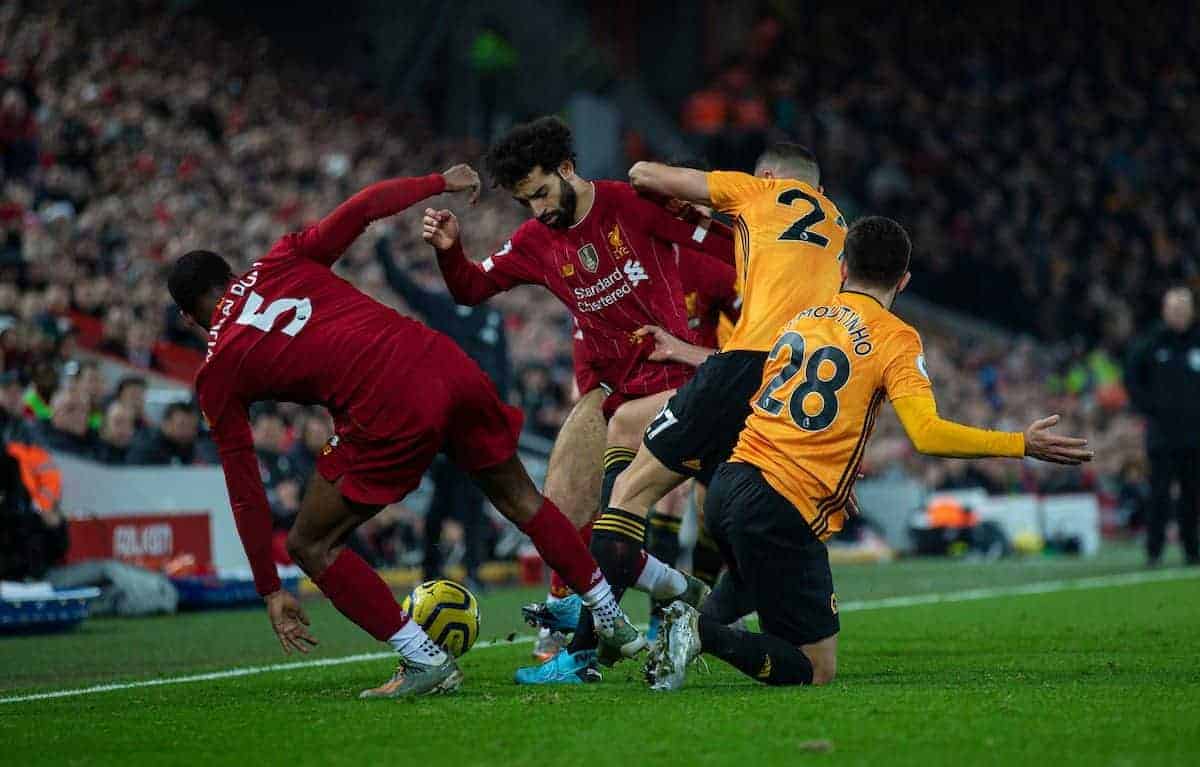
Against Wolves on Thursday, Salah had six efforts, which were weighted thus in terms of scoring probability:
- 17 mins: 14%
- 18 mins: 2%
- 45+1 mins: 8%
- 46 mins: 7%
- 50 mins: 5%
- 69 mins: 8%
- Average: 7.3%
Not a tremendous average, and even the total xG for Salah’s efforts was only 0.44. For context, Raul Jimenez’s headed equaliser was 0.28 by itself, while Diogo Jota‘s late miss stood a better chance of being a goal than all of Salah’s shots combined, at 0.48.
Across the six-game spell we’re looking at, Salah’s 22 shots weigh in with an average xG value of 0.13, an individual high of 0.47 (his close-range miss against United) and a low of 0.02 (second shot at Wolves).
Again just for context, a 13 percent rating for a chance is around the same as the value given to Virgil van Dijk‘s headed goal against United (12%).
Both goals Salah scored in these 22 shots (against Man United and Sheffield United) had the same xG value of 39 percent.

So how do these figures compare to Salah’s usual necessary xG to net?
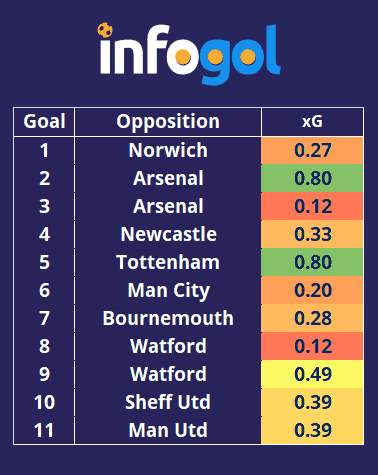
As we can see, Salah generally scores off reasonably high probability chances, with nothing below 12 percent and only two of his 11 goals coming from efforts with an xG below 0.20.
Thus, his recent average of 0.13 can be seen as way below the required shot quality range for Mo to be consistently trying to score from, and has certainly contributed as a knock-on effect to his lower-than-usual conversion rate.
A whopping 17 of his 22 shots across the last six games—77 percent of them—have had an xG of less than 0.12, so it’s reasonable to see why people’s frustrations might occur: the shots he’s taking on are not, typically, the type or quality of shot he scores from.
Away from the data
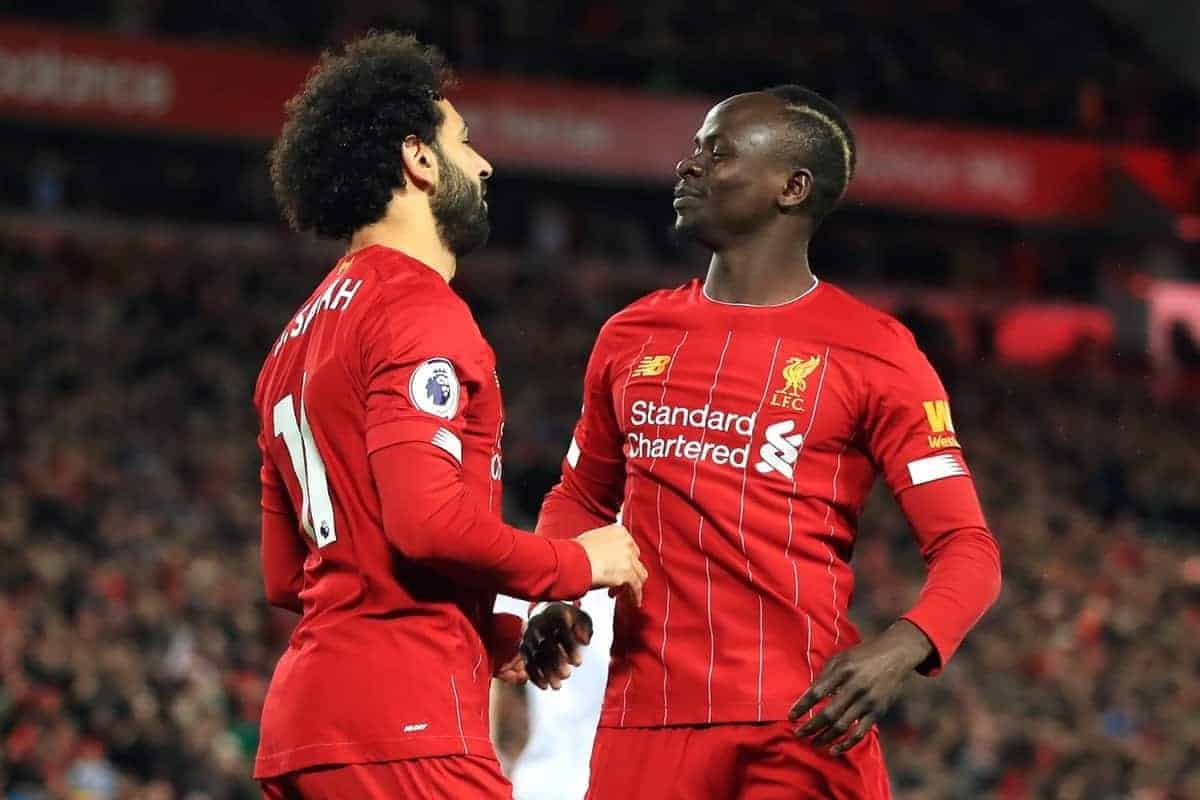
Before we draw any further conclusions from number sets or look beyond just shot data, certain considerations must be made.
The two games he has scored in, Man United and Sheffield United, were key fixtures—big games against difficult teams for one reason or another—and while one finished off the match, the other came early on against a normally stubborn opponent.
Both can be seen to be more important in the wider scheme of the season than, say, netting an extra goal against Leicester on Boxing Day when we won by four anyway.
There’s also the undeniable fact that it’s partly Salah’s willingness to take on shots from improbable angles which makes defenders double up on him, creating spaces for others, and helps keep the feeling of pressure mounting at times—an intangible, but very real, aspect of playing football.
Back to the numbers.
It’s not all about the shots
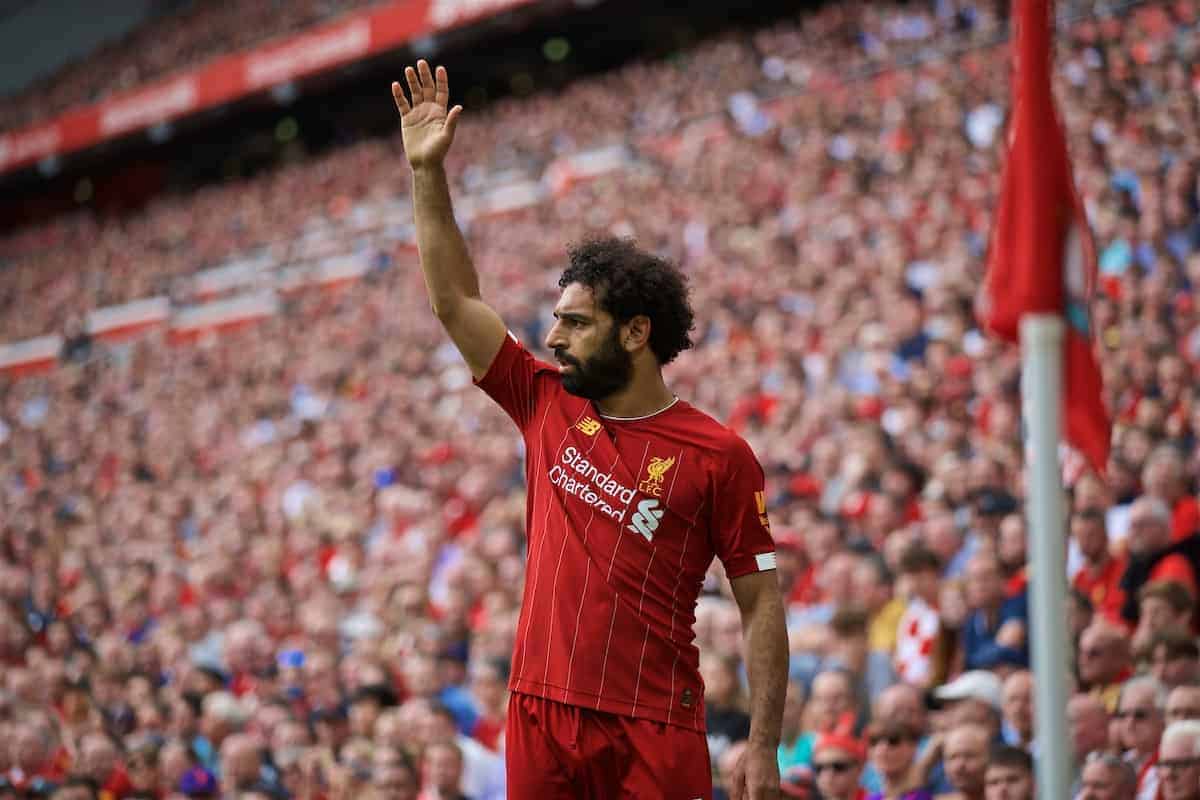
We can already hear the arguments: ‘we don’t need to see the data, if he’d just have passed to Ox or Minamino the chances of a goal would have been 100 percent!’
Well, yes, and no, and it doesn’t matter—but what does matter is an acknowledgement that Salah, like the rest of the attack, holds a big role in buildup play.
If he’s not passing at those moments, is he doing anything in that regard?
Spoiler: yes is the answer, a whole lot. The below screenshots are from Understat.
To assess the involvement of players in a team’s buildup play, we can utilise xG Chain (xGC) values—in short, how much a player contributed to all passing moves which resulted in a shot, even if his involvement came earlier in the combination play:

We can also see Mo’s contribution to actually setting up shots remains among the highest in the team with his key passes per 90:

And finally, in terms of a player’s total attacking output for the passes and shots they make, we can see the ‘Non-Penalty xG plus Assists per 90’ values—so essentially the number of goals per match we could expect a player to contribute to, excluding penalties:

There, with the values on the far right, Mo comes out top of the entire squad—and there’s a hint to how much Naby Keita could yet contribute, too, were he to find consistent fitness.
Areas for improvement

How do you improve a team which hasn’t lost, are champions (elect) of the Premier League, of Europe and of the world?
You work on the shortcomings evident in certain games at certain times, and, as noted above, multiple members of the squad have alluded to one of Liverpool’s recently: a lack of killer instinct and not scoring the chances which come up at the first time of asking.
There’s no question that a part of that falls on Salah’s shoulders, just as there’s no question that he should have passed at least the second of those two-on-one chances against Wolves.
This article isn’t here to tell you to stop fuming that he shot instead of squared—it’s painfully obvious he should have, particularly given the non-metrics of in-match context. We don’t need any calculations and stats to know that.
But even with the frustrations, even with the missed opportunities, he still gives so much to the team across the season and across individual games that, before any talk of improving on him takes hold, the very real question of who would do any different or any better must be answered.
The list of players who could do so will not be long.

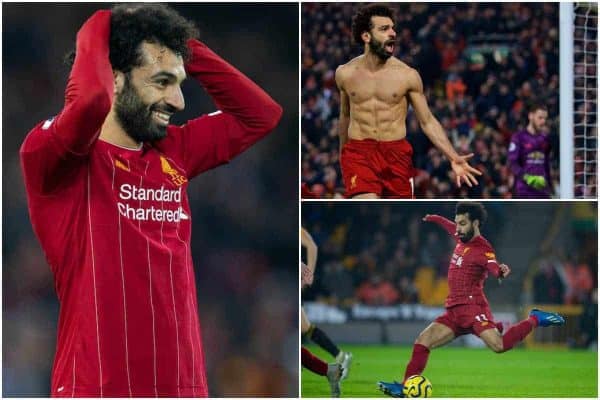






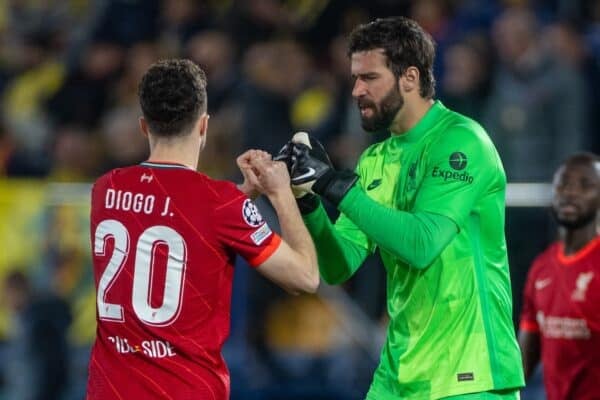

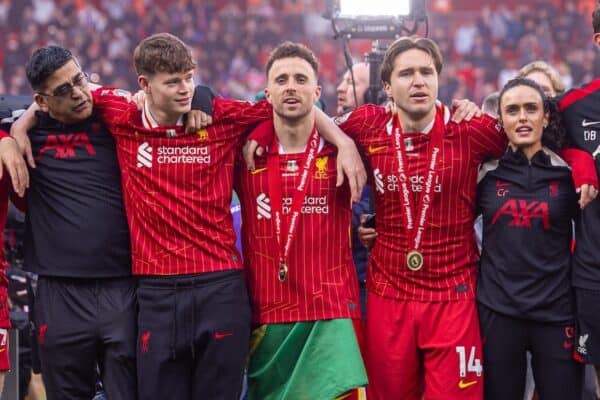







Fan Comments